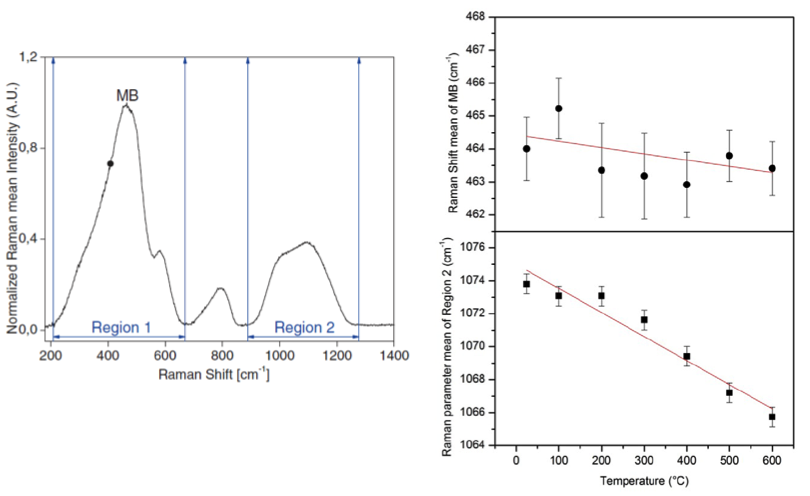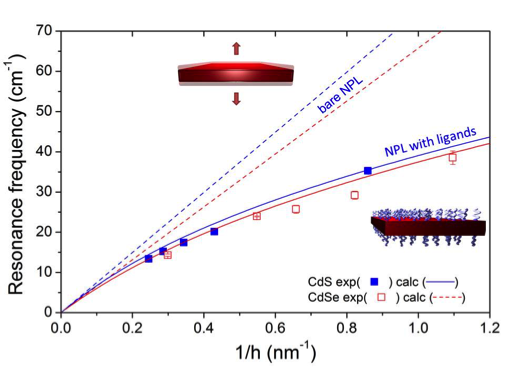A-thermal elastic behavior of silicate glasses

Depending on the composition of silicate glasses, their elastic moduli can increase or decrease as function of the temperature. Studying the Brillouin frequency shift of these glasses versus temperature allows the a-thermal composition corresponding to an intermediate glass to be determined. In an intermediate glass, the elastic moduli are independent of the temperature over a large temperature range. For sodium alumino-silicate glasses, the a-thermal composition is close to the albite glass (NaAlSi3O8). The structural origin of this property is studied by in situ high temperature Raman scattering. The structure of the intermediate albite glass and of silica are compared at different temperatures between room temperature and 600 °C. When the temperature increases, it is shown that the high frequency shift of the main band at 440 cm−1 in silica is a consequence of the cristobalite-like alpha-beta transformation of 6-membered rings. This effect is stronger in silica than bond elongation (anharmonic effects). As a consequence, the elastic moduli of silica increase as the temperature increases. In the albite glass, the substitution of 25% of Si4+ ions by Al3+ and Na+ ions decreases the proportion of SiO2 6-membered rings responsible for the silica anomaly. The effects of the silica anomaly balance the anharmonicity in albite glass and give rise to an intermediate a-thermal glass. Different networks, formers or modifiers, can be added to produce different a-thermal glasses with useful mechanical or chemical properties.
Mass load effect on the resonant acoustic frequencies of colloidal semiconductor nanoplatelets

Resonant acoustic modes of ultrathin CdS and CdSe colloidal nanoplatelets (NPLs) with varying thicknesses were probed using low frequency Raman scattering. The spectra are dominated by an intense band ascribed to the thickness breathing mode of the 2D nanostructures. The measured Raman frequencies show strong deviations with respect to values expected for simple bare plates, all the more so as the thickness is reduced. The deviation is shown to arise from the additional mass of the organic ligands that are bound to the free surfaces of the nanoplatelets. Calculating the eigenfrequencies of vibrating platelets weighted down by the mass of the organic ligands provides very good agreement with the observed experimental behaviors. This finding opens up a new possibility of nano mechanical sensing such as nanobalances.
Mechanical Coupling in Gold Nanoparticles Supermolecules Revealed by Plasmon-Enhanced Ultralow Frequency Raman Spectroscopy

Acoustic vibrations of assemblies of gold nanoparticles were investigated using ultralow frequency micro-Raman scattering and finite element simulations. When exciting the assemblies resonantly with the surface plasmon resonance of electromagnetically coupled nanoparticles, Raman spectra present an ultralow frequency band whose frequency lies below the lowest Raman active Lamb mode of single nanoparticles that was observed. This feature was ascribed to a Raman vibration mode of gold nanoparticle “supermolecules”, that is, nanoparticles mechanically coupled by surrounding polymer molecules. Its measured frequency is inversely proportional to the nanoparticle diameter and sensitive to the elastic properties of the interstitial polymer. The latter dependence as well as finite element simulations suggest that this mode corresponds to the out-of-phase semirigid translation (l = 1 Lamb mode) of each nanoparticle of a dimer inside the matrix, activated by the mechanical coupling between the nanoparticles. These observations were permitted only thanks to the resonant excitation with the coupling plasmon excitation, leading to an enhancement up to 104 of the scattering by these vibrations. This enhanced ultralow frequency Raman scattering thus opens a new route to probe the local elastic properties of the surrounding medium.

















